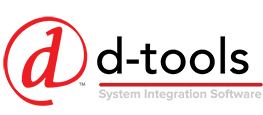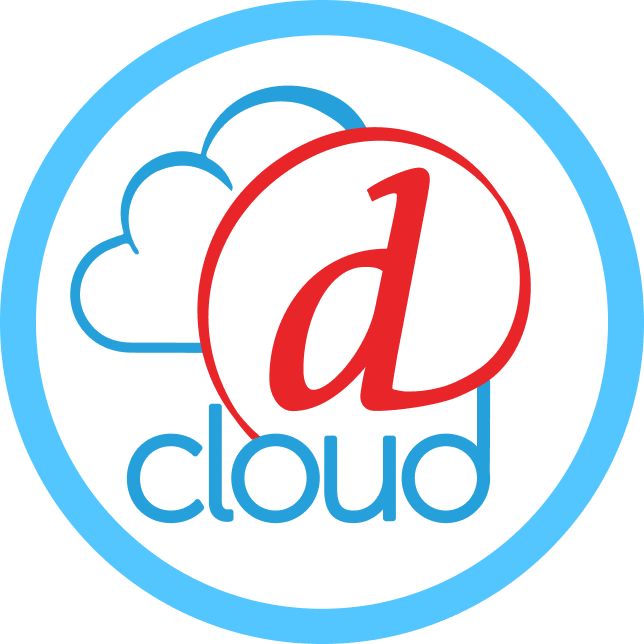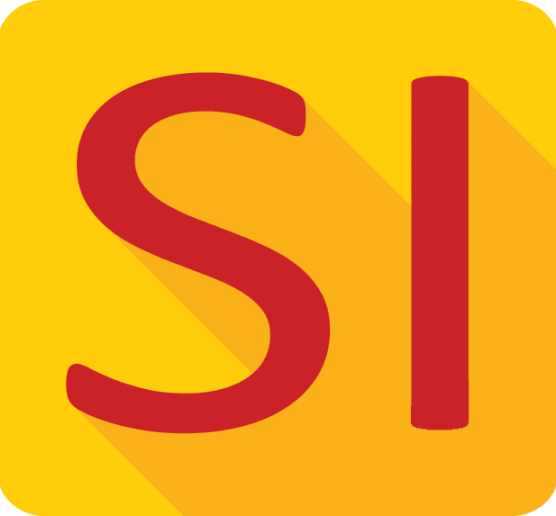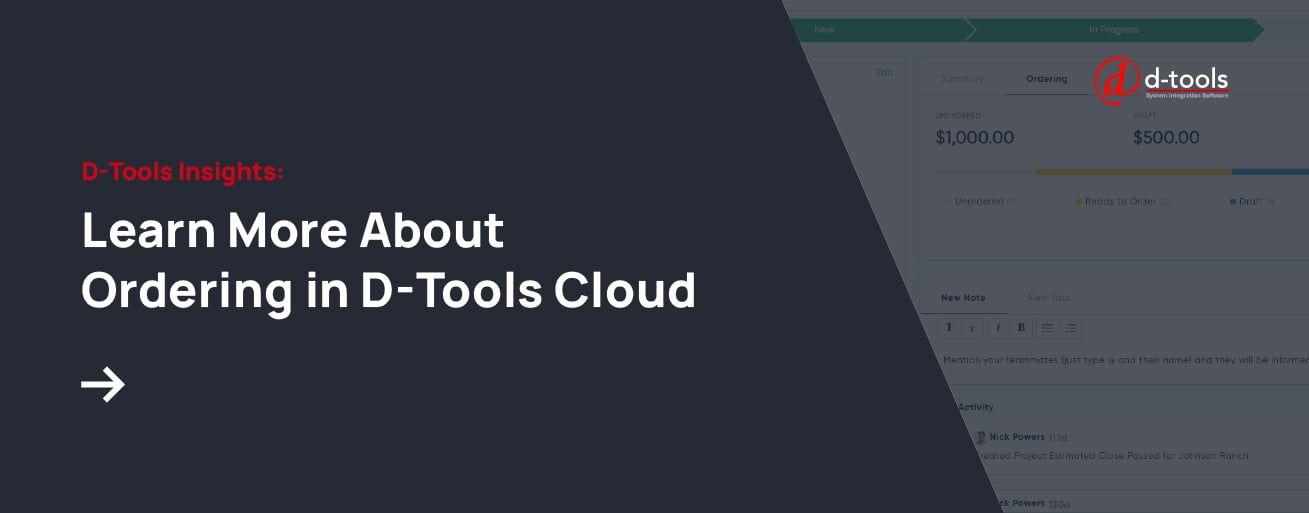Purchase orders help many companies handle the logistics of shipping and receiving items from many vendors more easily. A purchase order is simply a formal way of naming a list of goods or services a company is placing an order for, or attempting to buy.
For example, when working on a residential or commercial AV project, products may need to be ordered for speakers, monitors, and any necessary accessories, such as cables, mounts, etc. They can also be used for internal organizational things like requesting new computers, new equipment or furniture, and more.
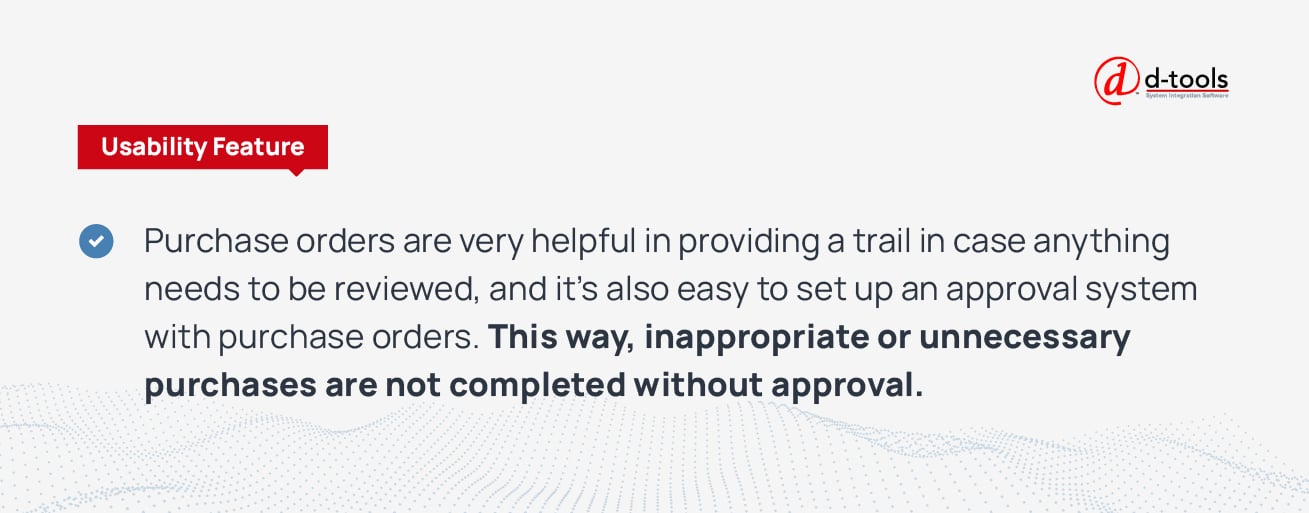
Purchase orders are very helpful in providing a trail in case anything needs to be reviewed, and it’s also easy to set up an approval system with purchase orders. This way, inappropriate or unnecessary purchases are not completed without approval. There are different types of purchase orders as well, including:
- Standard: This is the most common type, and the type that most people can easily understand. It will generally include a single order or group of items from the same vendor. Typically, companies use these types of purchase orders for one-off purchases.
- Blanket: This is a larger order, and may not be fully detailed yet. Essentially, it’s a plan to purchase items from a vendor. This might be used for planning purposes, as it indicates to the vendor a plan to purchase in large quantities in the future.
- Planned: This is similar to planned and blanket, but incorporates elements of both. A planned PO will set out an entire plan for a long purchase involving many items. For example, if your company is purchasing hundreds of Amazon Alexa devices, you might submit the full order and indicate that they will be sent in quantities of 100 per month. This could be due to inventory or storage reasons, or perhaps the payment needs to be divided over time. Either way, this order will contain all the details for each item purchased and the total price, as well as delivery and payment details.
- Contract: This is essentially just information gathered for the purposes of a future order. The contract order will contain the vendor’s details, including delivery details, address, and payment specifications.
Most businesses will use all or some of these purchase order types. If done correctly, these purchase orders will help keep the business organized and running smoothly. However, an insufficient or poorly organized PO process can create problems for a business. Some potential issues that can be solved by a well-organized PO system include:
- Improper accounting: Without properly created purchase orders that are shared with the accounting team directly or via an integrated system can result in missed payments, or budget shortfalls. It also makes it difficult for your accounting team to provide accurate data and financial status.
- Missed orders: Without a purchase order system that’s clear, with necessary steps, orders could be missed. They might languish at the approval stage, or not contain enough information for the vendor to fulfill. This can result in greater problems when items are missing that customers are expecting, or employees don’t have what they need to do company business.
- Inefficiency: If a purchase order is not submitted correctly, your accounts payable team may receive a bill. In order to find out what the bill is for, who approved it, the cost center it should come from, etc., they will have to do work and inquire with many people. This takes time, time that could be spent processing other orders and performing other duties. It is wasted time that could be spent better if the purchase order process is clear and easy to understand.
- Client confusion: When a purchase order is not streamlined, this may result in multiple bills or conflicting information being sent to clients. This could cause them to lose confidence in your company, and may result in lost income or missing payments if it’s too much to keep track of.
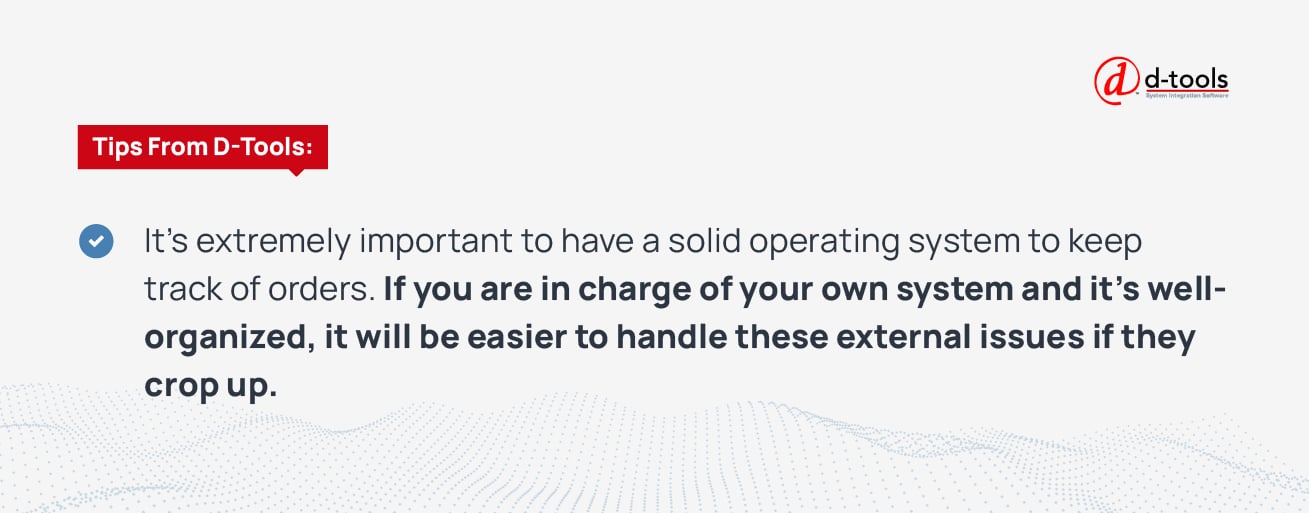
When working with shipping and logistics, it’s extremely important to have a solid operating system to keep track of orders. Many external factors can impact and delay shipments, like weather and supply shortages. If you are in charge of your own system and it’s well-organized, it will be easier to handle these external issues if they crop up.
9 Must-Have Features Any Cloud-Based Purchase Order System Needs
A cloud-based purchase order system can help businesses of any size stay organized and collaborate with customers. The best PO system features include:
- Easy ordering: It should be easy to create a purchase order for a client that includes a variety of products to be ordered, from a simple, easy-to-navigate user interface.
- Quick change options: You should be able to select products to be ordered now, or later, and make adjustments to your order at any time.
- Filters: You should be able to filter the products to be ordered by supplier, brand, category, location, or phase.
- Simple updating: You should be able to update the status of your PO easily when you get confirmation, shipping info, and when products are delivered.
- Create POs across projects: You may be using the same vendor for two different projects, so your PO system should enable you to create a purchase order containing all that allows you to filter by client and select when the items are ready to be ordered, or if they should wait.
- Tracking project capabilities: Your PO system should make it easy for you to keep track of purchase order drafts, products that are marked for order, have been ordered, and received from a single interface.
- Analytics: Your purchase order system should keep track of data and allow you to pull analytics that will give you insight into ordering patterns. This type of data is very helpful for forecasting and identifying ways to increase profits.
- Vendor and partner management: If you are collaborating with vendors and clients, the interface should make it simple. There should be an easy way to onboard them quickly and get them up to speed with minimal training.
- Presentation options: You should have the option to present proposed changes to your clients quickly, with minimal fuss. The system should track not only purchase orders but also change orders through project completion. This will keep everyone accountable and allow them to see the trail of changes.
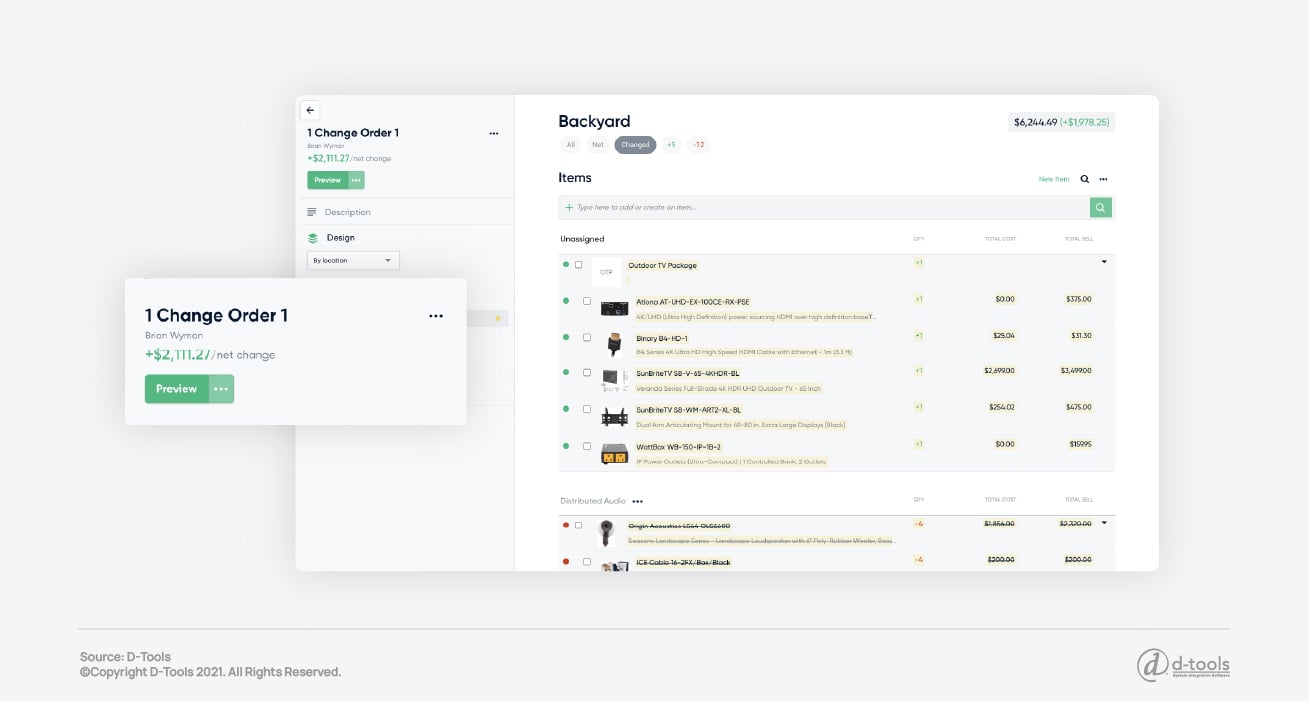
Who Benefits from Cloud-Based Purchase Order Systems?
Some businesses may think they’re too small for a cloud-based ordering system. The great thing about cloud-based ordering is that it can really benefit businesses of any size. They’re not just for large businesses, although the features will certainly help larger businesses streamline them. Here are some other benefits to cloud-based ordering systems:
- Investment: Other purchase order systems may require extensive software implementation, and may require the business to keep servers on-site. All this costs money and time, as some systems may be down while the software is implemented. Cloud-based systems, however, simply require signing up and logging in. Additionally, they are often billed monthly and don’t require a large initial investment.
- Easy to implement: The devices are simple to implement, typically involving quick training and logging in before getting started right away.
- Automation: Purchase order systems can automate several tasks, like automatically creating a bill when goods are received. These automated tasks can free up staff to deal with individual issues that require a personal touch.
- User-friendly: Cloud-based systems are easy to use and allow people to collaborate in real-time. This not only helps with projects, it also helps people learn the system as they can witness changes being made in real-time.
- Safe: Some are worried that the purchase order system in the cloud is dangerous, but cloud-based systems use encryption to ensure order details are safe from prying eyes.
- Cost center control: With a cloud-based system, you can ensure that the cost center for each purchase is listed. This makes it easier to track expenses and apply them to the correct department.
A cloud-based platform with an ordering system like D-Tools Cloud can be exactly what your company needs to grow and support your clients. The systems allow you to add users, collaborate with vendors and clients, in real-time, and use flexible pricing so you are not making a huge up-front investment. The system is user-friendly and designed around your business, so your team can collaborate from anywhere and everywhere, from any web-enabled device.
Originally published in January 2020. Updated in November 2021.
